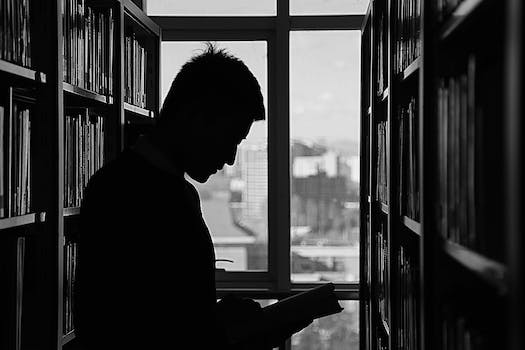

-
Table of Contents
Unveiling the dark side of the American Dream™: Empowering victims of trafficking.
Introduction
The Harsh Reality of the American Dream™ for Victims of Trafficking is a topic that sheds light on the challenging experiences faced by individuals who have been trafficked and their pursuit of the American Dream. This introduction aims to provide an overview of the harsh realities and struggles that victims of trafficking encounter while trying to rebuild their lives in the United States.
The Impact of Trafficking on Dreams of a Better Life in America
The American Dream™ has long been a symbol of hope and opportunity for people around the world. It represents the belief that anyone, regardless of their background or circumstances, can achieve success and prosperity in the land of opportunity. However, for victims of trafficking, the harsh reality of the American Dream™ can be far from what they had imagined.
Trafficking is a global issue that affects millions of people, and the United States is not immune to its devastating effects. Many victims are lured to the country with promises of a better life, only to find themselves trapped in a cycle of exploitation and abuse. Their dreams of a better life in America quickly turn into a nightmare.
One of the most significant impacts of trafficking on dreams of a better life in America is the loss of freedom. Victims are often forced into labor or the sex trade, where they are subjected to physical and emotional abuse. They are stripped of their basic human rights and treated as commodities to be bought and sold. The idea of achieving success and prosperity becomes a distant memory as they struggle to survive each day.
Another devastating impact of trafficking on dreams of a better life in America is the loss of identity. Many victims are forced to assume false identities or have their documents confiscated, making it nearly impossible for them to escape their captors. They are robbed of their sense of self and are left feeling powerless and invisible. The American Dream™, which promises the opportunity for self-expression and personal growth, becomes nothing more than an empty promise.
Trafficking also has a profound impact on the mental and emotional well-being of its victims. The constant fear and trauma they experience can lead to severe psychological distress, including anxiety, depression, and post-traumatic stress disorder. Their dreams of a better life in America are overshadowed by the daily struggle to survive and heal from the trauma they have endured.
Furthermore, the economic impact of trafficking on dreams of a better life in America cannot be ignored. Many victims are forced to work long hours for little or no pay, leaving them trapped in a cycle of poverty. The American Dream™, which promises economic prosperity and upward mobility, becomes an unattainable goal for these individuals. Instead of achieving success, they are left struggling to meet their basic needs and provide for their families.
In conclusion, the harsh reality of the American Dream™ for victims of trafficking is a stark contrast to the hope and opportunity it represents. The loss of freedom, identity, and mental well-being, as well as the economic impact, all contribute to the devastating effects of trafficking on dreams of a better life in America. It is crucial that we recognize and address this issue, working towards a society where the American Dream™ is a reality for all, regardless of their circumstances. Only then can we truly live up to the ideals that our country was founded upon.
Unveiling the Dark Side: Stories of Trafficking Survivors and Their Struggle for the American Dream

The American Dream™ has long been a symbol of hope and opportunity for people around the world. It represents the belief that anyone, regardless of their background or circumstances, can achieve success and prosperity in the land of opportunity. However, for victims of trafficking, the reality of the American Dream™ is far from what they had imagined.
Trafficking survivors are individuals who have been forced or coerced into various forms of exploitation, such as forced labor, sex trafficking, or domestic servitude. These victims often come from vulnerable populations, such as impoverished communities or countries with political instability. They are lured by promises of a better life, only to find themselves trapped in a nightmare.
One of the most heartbreaking aspects of the American Dream™ for trafficking survivors is the loss of freedom. These individuals are stripped of their basic human rights and treated as commodities to be bought and sold. They are forced to work long hours in deplorable conditions, often for little or no pay. Many are subjected to physical and emotional abuse, living in constant fear for their safety.
The stories of trafficking survivors are filled with tales of unimaginable suffering. Take the case of Maria, a young woman from Central America who was trafficked into the United States for forced labor. She was promised a job as a nanny, but upon arrival, her passport was confiscated, and she was forced to work as a domestic servant for a wealthy family. Maria endured years of abuse and exploitation, with no means of escape.
Another survivor, Sarah, was trafficked into the United States for sex trafficking. She was brought to a brothel and forced to work as a prostitute against her will. Sarah was subjected to physical violence and sexual assault on a daily basis, living in constant fear for her life. She was unable to seek help or escape due to threats made against her family back home.
The harsh reality of the American Dream™ for trafficking survivors is further compounded by the lack of support and resources available to them. Many victims are afraid to come forward and report their abuse due to fear of retaliation or deportation. They often live in the shadows, invisible to society, with no access to healthcare, education, or legal assistance.
While there are organizations and advocates working tirelessly to support trafficking survivors, the road to recovery is long and arduous. These individuals face numerous challenges, including trauma, stigma, and the difficulty of rebuilding their lives from scratch. Many struggle to find employment or stable housing, as their past experiences make it difficult for them to reintegrate into society.
It is crucial that we shed light on the dark side of the American Dream™ and raise awareness about the plight of trafficking survivors. By understanding the harsh reality they face, we can work towards creating a more compassionate and just society. This includes providing comprehensive support services, strengthening laws and policies to combat trafficking, and promoting education and awareness to prevent future exploitation.
In conclusion, the American Dream™ holds a different meaning for victims of trafficking. Their dreams of a better life are shattered by the harsh reality of exploitation and abuse. It is our collective responsibility to stand up for their rights and ensure that the American Dream™ becomes a reality for all, regardless of their past experiences.
Breaking the Cycle: Addressing the Challenges Faced by Trafficking Victims in Pursuit of the American Dream
The American Dream™ has long been a symbol of hope and opportunity for people around the world. It represents the belief that anyone, regardless of their background or circumstances, can achieve success and prosperity in the land of opportunity. However, for victims of trafficking, the pursuit of the American Dream™ can be a harsh and challenging journey.
Trafficking victims are often lured to the United States with promises of a better life. They may come from impoverished countries or regions plagued by violence and instability. The prospect of escaping their current situation and finding a better life in America is enticing, and traffickers prey on their vulnerability.
Once in the United States, trafficking victims find themselves trapped in a cycle of exploitation and abuse. They are forced into labor or the sex trade, working long hours for little or no pay. Their passports and identification documents are often confiscated, leaving them without any means of escape or legal protection.
The challenges faced by trafficking victims in pursuit of the American Dream™ are numerous and complex. One of the biggest obstacles they face is the language barrier. Many victims do not speak English, making it difficult for them to communicate with others and seek help. This isolation further perpetuates their vulnerability and dependence on their traffickers.
Another challenge is the fear of law enforcement and deportation. Trafficking victims are often threatened with arrest or deportation if they try to escape or seek help. This fear keeps them trapped in their exploitative situations, unable to break free from the cycle of abuse.
Furthermore, trafficking victims often suffer from physical and psychological trauma. They may be subjected to violence, sexual abuse, and extreme living conditions. The trauma they experience can have long-lasting effects on their mental and physical well-being, making it even more difficult for them to rebuild their lives and pursue their dreams.
Breaking the cycle of exploitation and addressing the challenges faced by trafficking victims in pursuit of the American Dream™ requires a multi-faceted approach. First and foremost, it is crucial to provide victims with safe and secure housing. Many victims are homeless or living in unsafe conditions, which only perpetuates their vulnerability. By providing them with stable housing, we can help them regain a sense of security and stability.
Additionally, comprehensive support services are essential. Trafficking victims need access to medical care, counseling, and legal assistance. They need help navigating the complex legal system and obtaining the necessary documentation to stay in the country legally. By providing these services, we can empower victims to break free from their traffickers and pursue their dreams.
Education and job training are also vital components of breaking the cycle of exploitation. By providing victims with the skills and knowledge they need to secure stable employment, we can help them become self-sufficient and independent. This not only provides them with a means to support themselves but also gives them a sense of purpose and dignity.
Lastly, raising awareness about the realities of trafficking and the challenges faced by its victims is crucial. By educating the public, policymakers, and law enforcement about the signs of trafficking and the support services available, we can create a society that is better equipped to identify and assist victims. This awareness can also help reduce the demand for trafficked labor and sex, ultimately working towards eradicating this heinous crime.
In conclusion, the pursuit of the American Dream™ for victims of trafficking is a harsh and challenging journey. However, by addressing the challenges faced by these victims and providing them with the support they need, we can help break the cycle of exploitation and empower them to pursue their dreams. It is our collective responsibility to ensure that the American Dream™ is accessible to all, regardless of their past experiences or circumstances.
Q&A
1. What is The Harsh Reality of the American Dream™ for victims of trafficking?
The Harsh Reality of the American Dream™ for victims of trafficking refers to the difficult and exploitative conditions experienced by individuals who have been trafficked into the United States.
2. What are some challenges faced by victims of trafficking in pursuing the American Dream?
Victims of trafficking often face numerous challenges, including limited access to legal protection, language barriers, psychological trauma, lack of education or job skills, and the constant fear of being discovered or re-trafficked.
3. How does the American Dream™ concept fail victims of trafficking?
The American Dream™ concept fails victims of trafficking as it often overlooks their unique circumstances and the systemic barriers they face. It assumes equal opportunities for all, disregarding the exploitation and trauma they have endured, making it difficult for them to achieve the same level of success and upward mobility as others.
Conclusion
The harsh reality of the American Dream™ for victims of trafficking is that they often face exploitation, abuse, and limited opportunities for a better life. Despite the promise of a better future, these individuals are subjected to forced labor, sexual exploitation, and other forms of human trafficking. Their dreams of a better life are shattered as they become trapped in a cycle of violence and exploitation. It is crucial to address this issue and provide support and resources to help victims escape their circumstances and rebuild their lives.












